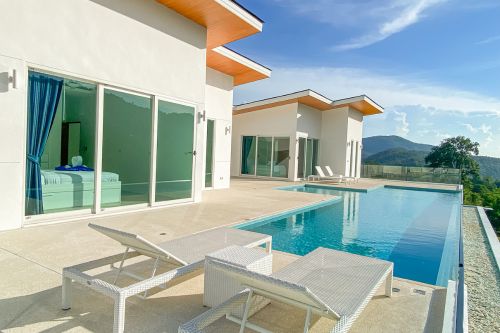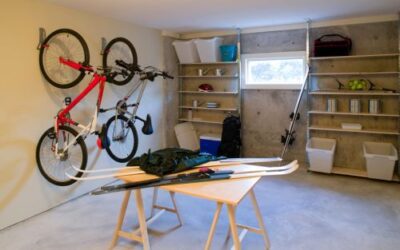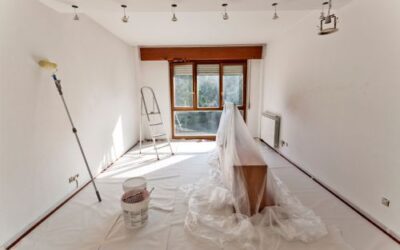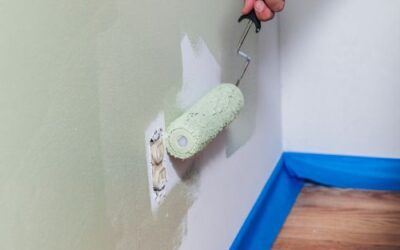The colour of a villa’s exterior not only defines its style, but also influences how it blends in with its surroundings and its aesthetic value. Choosing the right colour can be a challenge, but with a few tips and trends, you can make an informed decision that will make your home stand out. In this article, we’ll explore the best colour options, things to consider and tips on how to achieve a professional finish.
Contact our professionals
Gives a clean, modern look.Ideal for reflecting sunlight in warm areas.Factors to consider before choosing a colour
1. The location of the villa
The environment greatly influences the choice of colour. Mountain villas tend to benefit from natural tones such as greens, browns and greys, while those located near the sea stand out with lighter colours such as whites, blues or beige.
- Rural areas: Opt for earthy tones that complement the landscape.
- Urban environments: Neutral and sophisticated colours such as anthracite grey or off-white are usually a safe option.
2. Architectural style
The design of the villa also dictates colour choices. A modern style villa can benefit from a monochromatic palette, while a more classic one can stand out with pastel colours or cream tones.
- Modern style: Greys, whites and blacks.
- Mediterranean style: Whites, beige, terracottas.
- Rustic style: Browns, greens and ochres.
3. Climatic conditions
Climate also affects the perception of colour and its durability. In warm areas, light colours help reflect light and keep the interior cool. On the other hand, in cold climates, dark tones can add a sense of warmth.
- Warm climates: White, beige, light yellow.
- Cold climates: Dark grey, brown, forest green.
Colour trends for villa exteriors
1. White: Elegance and timelessness
White is a classic colour that never goes out of fashion. It brings brightness, visual spaciousness and combines well with any complementary material such as wood, stone or metal.
Advantages of white
- Ideal for reflecting sunlight in warm areas.
- Combines with any environment.
- Gives a clean, modern look.
Pro tip:
Combine with dark grey or wood accents for a sophisticated contrast.
2. Grey tones: Modernity and versatility
Grey has become a popular choice for its ability to adapt to both modern and classic styles. From light grey to anthracite, this colour conveys elegance and restraint.
Advantages of grey
- Resistant to stains and dirt.
- Provides a contemporary look.
- Works well in a variety of climates.
3. Terracotta colours: Mediterranean warmth
Terracotta and beige tones are perfect for villas in Mediterranean regions. These colours evoke warmth and tradition, while blending harmoniously with the landscape.
Advantages of terracotta tones
- Ideal for sunny areas.
- They complement natural materials such as stone and wood.
4. Blue and green: Natural inspiration
For villas near the sea or surrounded by nature, blue and green tones are an excellent choice. These colours evoke calm and freshness, and blend in perfectly with the surroundings.
Pro tip:
Choose a pastel shade if you are looking for a softer effect or a dark shade for a striking contrast.
How to combine colours on the exterior
1. Main façade and details
A popular trick is to use one main colour for the façade and a complementary colour for details such as window frames, doors or railings. For example:
- White façade: Details in dark grey or black.
- Beige façade: Details in dark brown or wood.
2. Balanced contrasts
Contrasts can bring the chalet to life if used in moderation. A neutral colour combined with a vibrant tone in the details can be the key to a balanced and attractive design.
- Example: Light grey facade with red door.
3. Integration with the garden
Consider how the colours of the villa relate to the surrounding garden or landscape. A villa surrounded by greenery can stand out with light or pastel tones that contrast with the natural greenery.
Common mistakes when choosing the colour of the chalet
1. Ignoring the surroundings
A villa painted in colours that clash with the landscape can be visually unpleasant. Always consider the surroundings and the materials of the building.
2. Choosing colours that are too dark
Although they can be elegant, dark colours absorb more heat and can fade over time. They can also make the chalet appear smaller.
3. Do not test colour samples
What looks like a perfect shade in the shop may look different when applied on a large surface and in natural light. Always try a sample before deciding.
Tips for a professional finish
1. Prepare the surface well
Before painting, make sure the surface is clean, dry and free of imperfections. This ensures that the paint will adhere properly and last longer.
2. Use quality paints
Choose high-quality exterior paints that are weather and fade resistant. Look for options with waterproof and mildew-resistant properties.
3. Trust professionals
For impeccable results, trust Bartolomé Bas Pinturas, experts in transforming your villa with a professional finish. For long-lasting, aesthetically pleasing results, trust paint experts like those at Bartolomé Bas Pinturas. We have the experience and materials necessary to transform your villa, offering a wide range of services such as waterproof paint for humid climates, weather-resistant finishes and customised options that guarantee a long-lasting and aesthetic result.
Other publications that may interest you
Paint suitable for basements and poorly ventilated rooms
Basements, storerooms or garages have unique conditions: poor ventilation, high humidity and increased risk of mould or condensation. Using conventional paint in these spaces is a common mistake that leads to ephemeral finishes and health problems due to fungi or...
How often should a house be painted depending on its use?
The frequency with which you should paint a house is not always the same. It depends on several factors: the use given to each room, the quality of the paint used, exposure to light or humidity, and even the colour. In this guide we explain how often you should renew...
Tips for painting a room without staining doors and sockets
Painting a room may seem like a simple task, but without the right preparation it's easy to end up with splashes on doors, sockets, switches and even skirting boards. If you want a clean, professional finish, we've got the best tips to avoid stains and save you...




